Philodendron erubescens, commonly called the Red-leaf Philodendron, has lance-heart-shaped lobed leaves that are deep green and have a glossy texture. However, the underside of these leaves possesses a subtle yet gorgeous red hue, making them even more compelling. Moreover, there are many shades of a radish-purple hue on the stems of this plant, enhancing its overall visual appeal. Plants need careful care and a proper understanding of their needs to flourish and provide the intended benefits. Furthermore, Red-leaf Philodendron is a popular indoor and outdoor plant choice due to its beautiful greenery and environmental benefits.
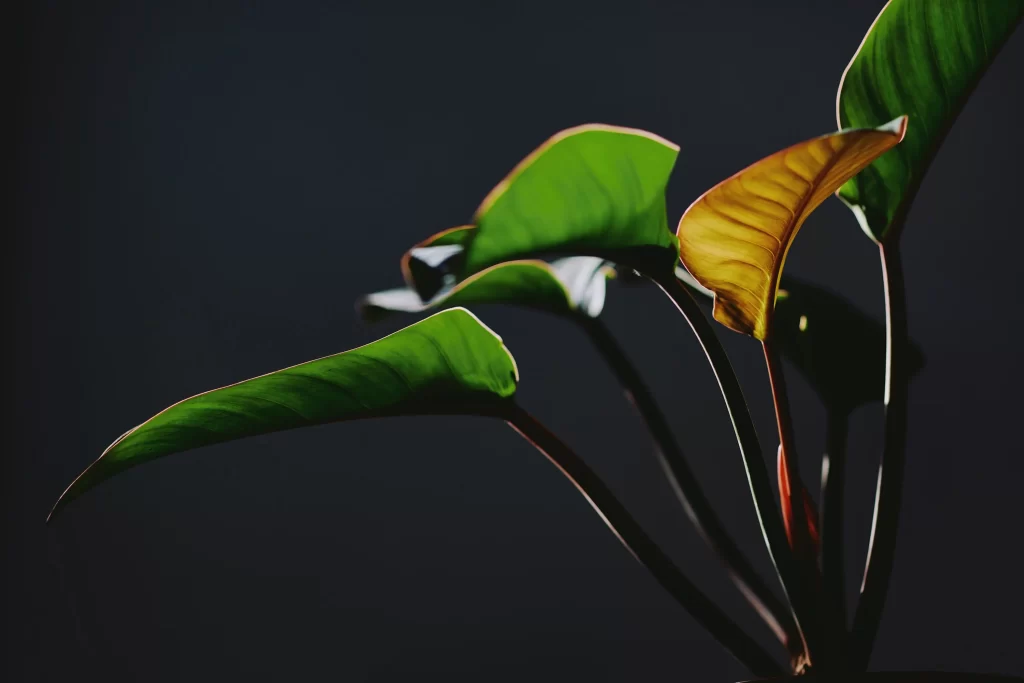
Explore different types of Philodendron erubescens species
There are the characteristics and features of each cultivated species of Red-leaf Philodendron:
1. Philodendron Pink Princess:
The Philodendron Pink Princess variety is recognized for its striking pink variegation on the leaves. However, the variegation can range from light pink to deep magenta, creating an eye-catching contrast against the deep green base color of the leaves.
However, few plants worldwide have foliage as unique and visually appealing as the Pink Princess. Moreover, it typically thrives in well-lit indoor environments and can develop into an impressive trailing or climbing plant.
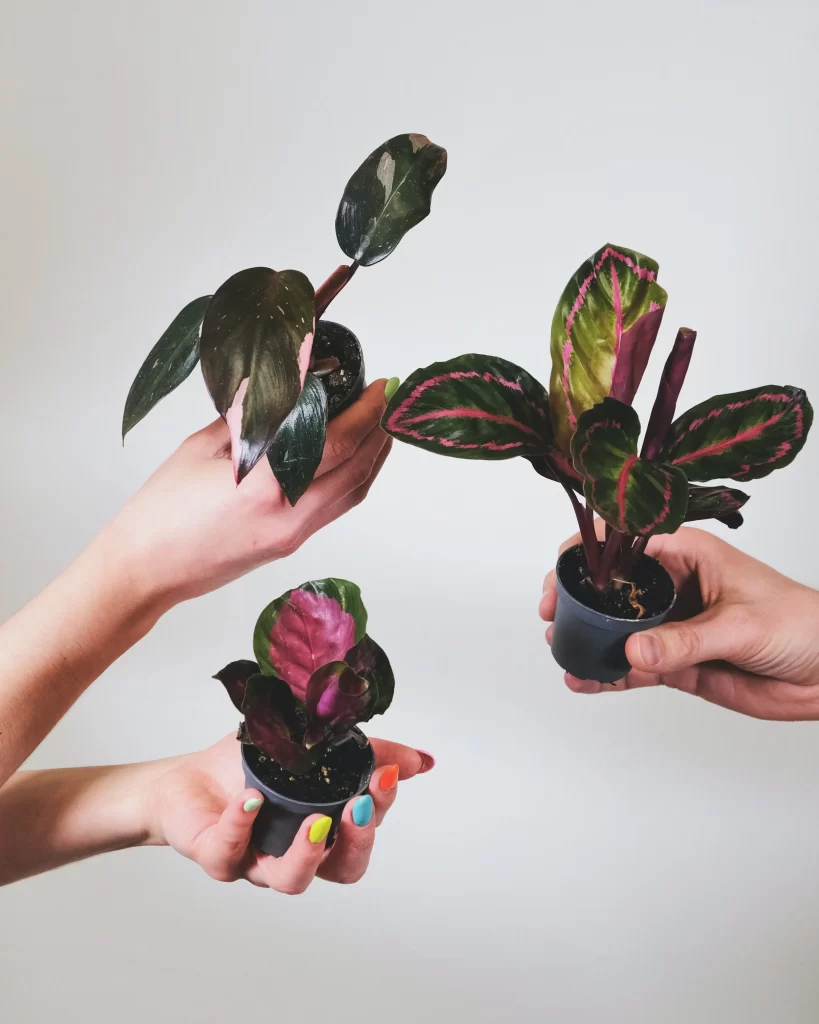
2. Philodendron Erubescens Ruby:
The Ruby variety showcases lush, dark green leaves with a prominent reddish undertone. However, the leaves may have a glossy texture, and the reddish hue adds depth to the overall appearance.
With its rich coloration, Erubescens Ruby stands out as an attractive houseplant. However, it’s relatively moderate to monitor and can survive various daylight conditions, making it a popular choice among indoor plant gardeners.
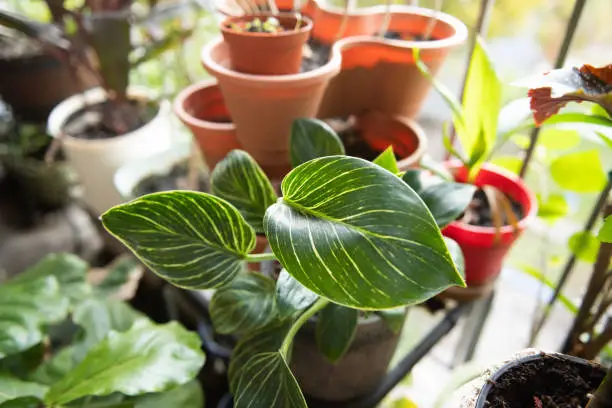
3. Philodendron Erubescens Imperial Red:
The Imperial Red variety boasts deep red stems and the underside of the leaves. However, the leaves have a green hue, creating a striking contrast.
However, its vibrant red elements make Imperial Red an excellent choice to amend in interior spaces. It’s relatively low-maintenance and can thrive in moderate to bright indirect light.
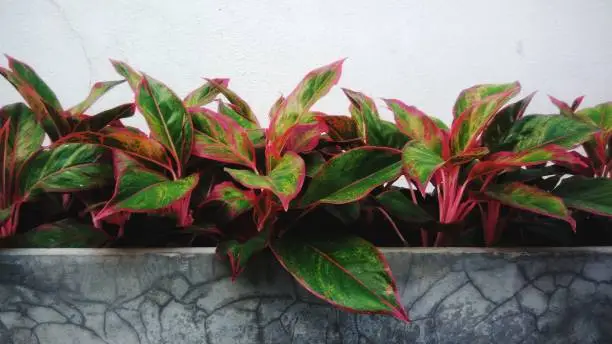
Read: Types of Philodendron: Exploring Diverse Varieties
4. Philodendron Erubescens Red Emerald:
Red Emerald features dark green leaves with an iridescent reddish-purple sheen. The leaves have a glossy texture and may display a subtle shimmer in specific lighting.
The Red Emerald’s unique leaf coloration and texture make it an eye-catching choice for plant enthusiasts. It requires similar care to other Philodendron varieties and beautifies indoor and interior areas.
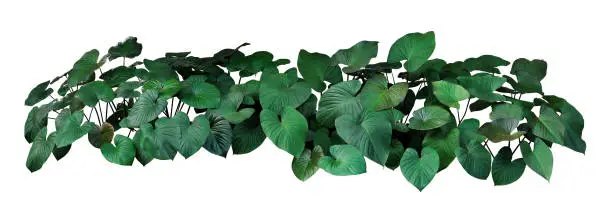
5. Philodendron Erubescens Green Emerald:
The Green Emerald variety has vibrant green leaves with a glossy finish. However, it lacks the reddish undertones found in some other types.
While not as colorful as other erubescens varieties, the Green Emerald still offers lush and attractive foliage. Therefore, it’s a great idea for those who prefer a more natural and classical green look to their indoor plants.
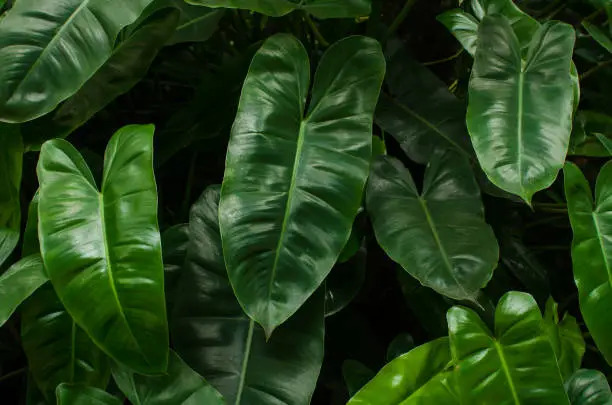
6. Philodendron Erubescens Gold:
The Gold variety features leaves with golden-yellow variegation or patches. However, there is a wide range of intensity regarding variegation, from subtle streaks to more prominent patches.
Since there is no better choice to brighten your indoor spaces than gold plants. Its unique coloration can create an eye-catching point in any interior.

Read: Tiger Lily: Care, Significance, and Medicinal Uses Unveiled!
Leaf Appearance and Features Red-leaf Philodendron
Philodendron erubescens offers a captivating blend of aesthetics and practicality. Its luscious, lance-heart-shaped leaves with a glossy texture and reddish-purple stems bring a touch of tropical elegance to indoor and outdoor spaces alike. Hanging baskets, trellises, or floors can all be embellished with this versatile plant’s climbing or trailing habits. However, Philodendron erubescens Leaf characteristics
- Leaf shape
- Leaf Hue
- Deep green with a reddish-purple stem
- Leaf Texture
- Glossy
- Stem Color
- Reddish-Purple
- Notable Feature
- Air-Purifying Qualities

Basic information about Philodendron erubescens
The Red-leaf Philodendron possesses several distinctive characteristics:
Sun Exposure
Philodendron erubescens, a beautiful plant known for its vibrant classical greenery, prefers bright, indirect daylight. However, it can handle some exposure to direct daylight. However, natural daylight should be avoided as it can harm the leaves.
Hardiness
This Philodendron is generally considered hardy in USDA hardiness zones 10-11. Grow this plant species indoors to protect it from severe cold conditions in cold areas. However, this way, you can still enjoy its stunning beauty and greenery without putting it at risk of harm. However, remember to keep it in indirect daylight to help it flourish indoors.
Height
The mature height of Philodendron erubescens can vary, but it typically reaches around 2 to 4 feet (0.6 to 1.2 meters) indoors. However, If grown outdoors in optimal conditions, it can develop growth to about 60 Feet.
Space Area Coverage
As a climbing or trailing plant, Red-leaf Philodendron can spread and cover a significant amount of space. Meanwhile, when using it as a climber, provide adequate support for its growth like moss pole.
Spread
The plant’s spread depends on growth conditions, but it can spread up to 4 feet (1.2 meters) or more when grown as a climbing vine.
Flowering
While Philodendron erubescens can produce flowers, they are relatively inconspicuous compared to the striking foliage. However, the flowers are typically small and red. However, with proper care, Red-leaf Philodendron has beautiful deep red flowers in the spring and summer. Bright, indirect daylight is a must.
Growth Habit
The growth habit of this Philodendron is climbing or trailing. However, it sends out aerial roots along its stems, which it uses to cling to surfaces and support its growth, reducing the requirement for other materials like moss poles.
Indoor/Outdoor
Due to its sensitivity to cold temperatures, Philodendron erubescens is commonly grown indoors in many regions despite its ability to grow outdoors in warmer climates.
Maintenance and monitoring
This philodendron variety requires relatively moderate monitoring and care. Meanwhile, regular pruning to manage its growth, cleaning the leaves to remove dust, and monitoring for any signs of pests are key aspects of care.
Soil
Well-drained, aerated soil is recommended for Red-leaf Philodendron. However, a mix formulated for aroid or general houseplant soil works well.
Watering
For healthy Philodendron erubescens with beautiful red flowers in spring and summer, avoid direct sunlight and keep the soil moist by maintaining watering but not soggy.
Fertilization
Use liquid fertilizer during the growing season. However, Philodendron erubescens produces beautiful deep red flowers in the spring and summer with proper care.
Container gardening
Red-leaf Philodendron can be grown in containers indoors, which allows you to control its size and placement more effectively.
However, this information provides a comprehensive overview of Philodendron erubescens and its characteristics.
Plant care calendar for Philodendron erubescens
Philodendron erubescens plant care calendar is as follows:
| Season | Months | Tasks to Do |
| Spring | March-May | – Increase watering frequency. |
| – Begin fertilizing with a balanced liquid fertilizer. | ||
| – Trim stems to a manageable size. | ||
| – Monitor and adjust humidity levels. | ||
| Summer | June-August | – Maintain consistent watering. |
| – Continue regular fertilization. | ||
| – Provide support for climbing vines like moss poles. | ||
| – Ensure proper air circulation. | ||
| Fall | September-November | – Reduce watering as daylight decreases due to the winter season. |
| – Prune and shape the plant for the required appearance. | ||
| – Adjust placement as sunlight angles change. | ||
| Winter | December-February | – Water sparingly, allowing the soil to partially dry. |
| – Clean leaves to ensure proper respiration. | ||
| – Monitor plant health and respond as needed. |
Hence, regular care and attention will help your Philodendron erubescens plant flourish throughout the seasons.
Is Philodendron erubescens toxic to pets?
Yes, Philodendron erubescens, also known as the Red-leaf Philodendron or Blushing Philodendron, is considered toxic to pets, including dogs, cats, and other household companion animals. However, chewing on the plant can cause irritation and discomfort because of calcium oxalate crystals.
It’s important to keep Red-leaf Philodendron and other Philodendron species out of reach of pets to prevent accidental ingestion.
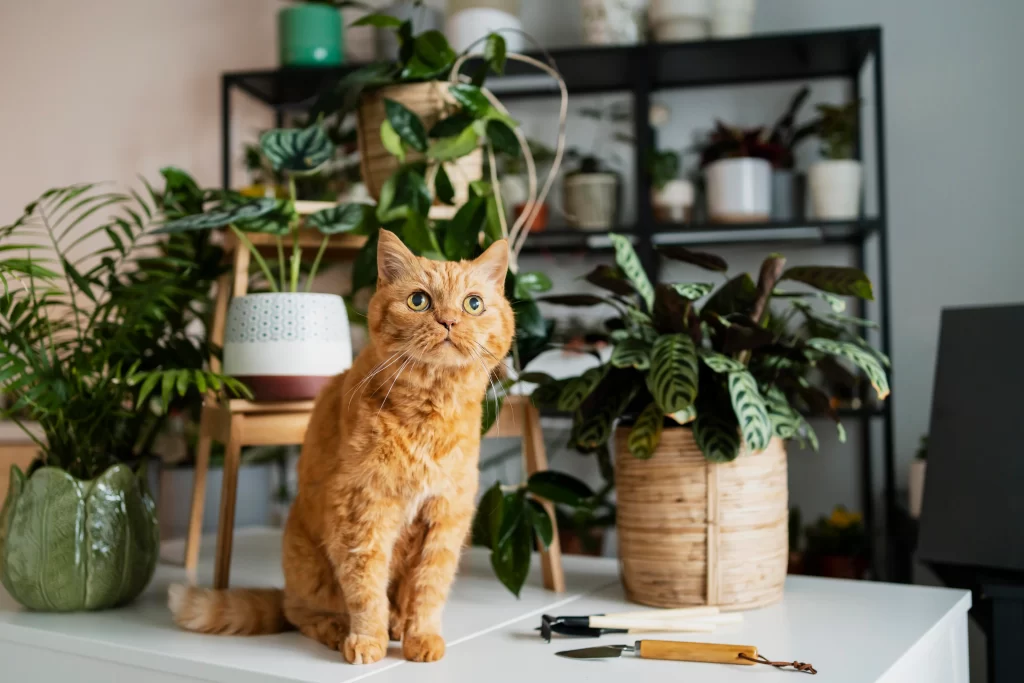
However, as a responsible pet owner, it’s always good practice to research the toxicity of plants in your home and ensure that any potentially harmful plants are kept in inaccessible areas to your pets. Meanwhile, check out the official website of the American Society for the Prevention of Cruelty to Animals (ASPCA) to see which indoor plants are toxic.
Statistical Analysis
Here is a statistical study of indoor plants’ toxicity of fellow animals, a severe problem. However, this problem is caused by toxic house plants containing Calcium Oxalate crystals for animals[2] Indoor Companion Animal Poisoning by Plants in Europe. Read.

Read: Pothos vs. Philodendron
Philodendron erubescens is environmentally friendly
Philodendron erubescens, like many other plants, does provide certain environmental benefits. However, here are a few ways in which Red-leaf Philodendron can be considered environmentally friendly within the context of indoor spaces:
Air purification
Like many other indoor plants, Philodendron erubescens can help improve indoor air quality by removing certain airborne pollutants and toxins. Meanwhile, when plants perform photosynthesis, they absorb carbon dioxide and release oxygen. They also filter out pollutants like volatile organic compounds (VOCs) up to 90% [3] Korostenskij, I., Propagation, upkeep, and impact on mental health and classroom/workplace success of Dracaena trifasciata, Chlorophytum comosum, and Philodendron hederaceum. 2021. Read.

Humidity regulation
Philodendron erubescens and other plants release moisture into the air through transpiration. However, this can help boost humidity levels in indoor environments, which can be beneficial for respiratory health and ease, especially in dry climates or during the winter months.
Relaxing effect
Incorporating plants like Philodendron erubescens into indoor spaces can enhance the aesthetic appeal of the environment. However, natural elements and greenery boost relaxation and reduce stress, promoting a positive psychological effect[4]Nainwal, P., Review on Philodendron Species-Plant Seeking For Validation of Its Therapeutic Approaches. J. Pharm. Sci. & Res. Vol. 11(5), 2019, 2003-2006. Read.
Read: The Black Pagoda Lipstick Plant: Traditional Medicine and Cosmetics
While Red-leaf Philodendron is an indoor plant that offers many positive benefits, its environmental effect is primarily restricted to indoor locations. However, the potential invasiveness of this plant in some climates and its impact on local ecosystems should be considered outside its intended context.
Conclusion
Besides enhancing interior decor, this plant filters pollutants and increases humidity levels, improving air quality. Ideally, Red-leaf Philodendrons should not be planted near pets or small children due to their toxicity. Therefore, serious health risks associated with Philodendron erubescens ingestion should be considered before allowing it into any home with young children or pets. At the same time, its positive impact on indoor environments is noteworthy. A healthy and vibrant appearance can only be achieved by providing it with appropriate lighting, watering, and maintenance.
References
| ↑1 | Explore more about Blushing Philodendron – Plant catalog. Read |
|---|---|
| ↑2 | Indoor Companion Animal Poisoning by Plants in Europe. Read |
| ↑3 | Korostenskij, I., Propagation, upkeep, and impact on mental health and classroom/workplace success of Dracaena trifasciata, Chlorophytum comosum, and Philodendron hederaceum. 2021. Read |
| ↑4 | Nainwal, P., Review on Philodendron Species-Plant Seeking For Validation of Its Therapeutic Approaches. J. Pharm. Sci. & Res. Vol. 11(5), 2019, 2003-2006. Read |



